 September 24, 2020 John E. Ross, KD8IDJ, Editor
| ||||||
MARS Communications Exercise to Involve Amateur Radio Community Military Auxiliary Radio System (MARS) volunteers will take part in the Department of Defense (DOD) Communications Exercise 20-4, starting on October 3 and concluding on October 26. The MARS focus is interoperability with ARRL and the amateur radio community. "Throughout the month of October, MARS members will interoperate with various amateur radio organizations that will be conducting their annual simulated emergency tests with state, county, and local emergency management personnel," said MARS Chief Paul English, MARS members will also train with the ARRL National Traffic System (NTS) and Radio Relay International (RRI) to send ICS 213 general messages to numerous amateur radio leaders across the US. "This exercise will culminate with MARS Auxiliarists sending a number of summary messages in support of a larger DOD communications exercise taking place October 20 - 26," English added. Throughout the month of October, MARS stations will operate on 60 meters, and WWV/WWVH will broadcast messages to the amateur radio community. English assures no disruption to communications throughout the month-long series of training events. Venerable AO-7 Satellite Approaching a Return to Full Solar Illumination AMSAT-OSCAR 7 (AO-7), the oldest amateur radio satellite still in operation, is nearing a return to full illumination by the sun, which should take place around September 25 and continue until around December 26. AMSAT's vice president of operations Drew Glasbrenner, KO4MA, says that during this period, AO-7 likely will switch between modes A (2 meters up/10 meters down) and B (70 "Try to find yourself with very low power, or on SSB, or best, with full Doppler control," Glasbrenner said. "If you have to use high power to find yourself, your receive antenna and system probably needs improvement." Last May, the nearly 46-year-old AO-7 made possible a contact between Argentina and South Africa -- a distance of more than 4,300 miles. Both stations were aiming just 2° or 3° above the horizon. AO-7 only works when it's receiving direct sunlight and shuts down when in eclipse. Launched in 1974, AO-7 surprised the amateur satellite community by suddenly coming back to life in 2002 after being dormant for nearly 30 years and periodically re-emerging. AMSAT considers AO-7 "semi- Built by a multinational team under AMSAT's direction, AO-7 carries a non-inverting Mode A transponder (145.850 - 950 MHz up/29.400 - 500 MHz down) and an inverting Mode B (432.180 - 120 MHz up/145.920 - 980 MHz down) linear transponder. AO-7 has beacons on 29.502 and 145.975 MHz, used in conjunction with Mode A and Mode B/C (low-power mode B), respectively. A 435.100 MHz beacon has an intermittent problem, sometimes switching between 400 mW and 10 mW. FCC Grants Waiver Permitting Garmin to Market a Combination Part 95/Part 25 Device The FCC has granted the request of Garmin International for a waiver of Section 95.2761 of the FCC's rules, permitting it to obtain equipment certification for a handheld unit that combines a low-power, terrestrial Part 95 Multi-Use Radio Service (MURS) transmitter and a Part 25 emergency satellite communication module in the same device. The FCC responded to Garmin's request in an Order released on September 21. Section 95.2761(c) precludes combining MURS transmitting capabilities in equipment that is also capable of transmitting in another service, with the exception of Part 15 unlicensed services. The FCC said it determined that it would be in the public interest to waive Section 95.2761(c), so that Garmin may obtain authorization to produce its proposed handheld device. "We find here that Garmin's proposed device contains an important public safety feature, which would not be brought to market if we were Garmin's proposed product would include two transmitters: a low-power MURS transmitter for short-range terrestrial communication, and a previously certified Part 25 module that would allow emergency communication via the Iridium satellite system under a blanket license held by Iridium. End users would have to subscribe to the Iridium service. Garmin argued in its petition that the purpose of the original equipment authorization restriction was "to prevent consumer confusion with other terrestrial services that either had different licensing regimes or were for different types of communications" and that it is inappropriate in this case. "We agree with Garmin that its device's intended use does not flout the purpose of Section 95.2761(c)," the FCC said in its Order. "Garmin maintains that the Part 95 MURS transmitter and the Part 25 module operate on different frequencies and will not operate simultaneously. Provided the device is constructed in this manner, we are persuaded that its dual purposes will be well segregated." ARRL Podcasts Schedule
The On the Air and Eclectic Tech podcasts are sponsored by Icom. Both podcasts are available on iTunes (iOS) and Stitcher (Android) as well as on Blubrry -- On the Air | Eclectic Tech. IARU Region 1 President Sounds Alarm on Wireless Power Transfer for Vehicles International Amateur Radio Union (IARU) Region 1 President Don Beattie, G3BJ, wants to raise greater awareness regarding the interference potential of Wireless Power Transfer for Electric Vehicles (WPT-EV). He is urging IARU member-societies to contact national regulators to make them aware of the technology's potential for "RF pollution." Beattie notes that WPT-EV chargers can run as much as 20 kW. WPT-EV was on the agenda for World Radiocommunication Conference 2019 (WRC-19). The International Telecommunication
Union (ITU) Radiocommunication Sector (ITU-R) conducted studies to assess the impact of WPT-EV on radiocommunications and suitable harmonized frequency ranges. Those ITU-R studies identified the 19 - 25 kHz band, as well as bands in the 50 kHz and 60 kHz range, for high-power WPT-EV, and the 79 - 90 kHz band for medium-power WPT-EV. The consensus of WRC-19 delegates was to make no changes in the ITU Radio Regulations with respect to WPT-EV. The Netherlands' IARU member-society VERON has posted the text (translated into Dutch) of Beattie's remarks on the subject. "The discussions about WPT-EV have reached a point where they are moving from the technical to the political arena," Beattie said. "Discussions with a national regulator indicate that we must now take action at the national level. The amateur service, but also other telecommunication services, will experience the consequences of WPT-EV." Beattie urged member-societies in Region 1 to contact national regulators, preferably in person, to explain why radio amateurs are so concerned. He pointed out that long charging times in populated areas could generate harmonics that make radio communication very difficult. "Models show that this also applies to the wider environment of a WPT-EV installation," Beattie said. "Broadcasters, stationary, and Beattie noted that the WPT-EV discussion has been going on for a long time. The technology is similar to that used for wireless charging of cell phones. "The wireless charging of electric cars is done with large coils," he explained. "One of them on the ground under the vehicle, the second in the car. Typically, about 22 kW is transferred wirelessly through those coils. This is done using frequencies between 79 and 90 kHz. Technical and operational standards for WPT-EV are under development." WPT-EV developers are seeking noise level limits that are some 30 - 45 dB above current noise levels, Beattie said. "Limits that have a serious negative effect on the radio spectrum," he asserted. "In the interests of the future of amateur radio, we need to get the attention of national regulators," Beattie concluded. "This is about the future of amateur radio!" The K7RA Solar Update Tad Cook, K7RA, Seattle, reports: Up until September 23, we saw 32 consecutive days with no sunspots. Then new sunspot group AR2773 came into view, with a magnetic signature indicating that it's part of new Solar Cycle 25. According to Spaceweather.com, AR2773 is a weak sunspot group and may not persist for long. The daily sunspot number for September 23 was 13, indicating three sunspots visible in that group. Average daily solar flux rose from 69.2 to 71.1 over the reporting week of September 17 - 23. Geomagnetic indicators were about the same, with average daily planetary A index declining from 5.3 to 5.1.
Predicted planetary A index is 12, 15, 12, 25, and 15 on September 24 - 28; 8 on September 29 - 30; 5 on October 1 - 10; 10 on October 11; 5 on October 12 - 19; 10, 12, 16, 28, 18, and 10 on October 20 - 25; 5 on October 26 - November 6, and 10 on November 7. The SciTechDaily article "How NASA & Scientists Around the World Track the Solar Cycle" is an interesting read. Sunspot numbers for September 17 - 23 were 0, 0, 0, 0, 0, 0, and 13, with a mean of 1.9. The 10.7-centimeter flux was 69.7, 69.9, 70.6, 70.2, 71.3, 72.4, and 73.3, with a mean of 71.1. Estimated planetary A indices were 4, 5, 3, 4, 3, 6, and 11, with a mean of 5.1. Middle latitude A index was 5, 4, 4, 4, 3, 5, and 10, with a mean of 5. A comprehensive K7RA Solar Update is posted Fridays on the ARRL website. For more information concerning radio propagation, visit the ARRL Technical Information Service, read "What the Numbers Mean...," and check out K9LA's Propagation Page. A propagation bulletin archive is available. For customizable propagation charts, visit the VOACAP Online for Ham Radio website. Share your reports and observations. Just Ahead in Radiosport
Hams Help Find Kids by Monitoring FRS Channel Late on the afternoon of September 16, the police department in Post Falls, Idaho, received a 911 call that two juveniles -- ages 9 and 11 -- were missing from a Post Falls residence for about an hour. According to the report, the pair had left home intending to play in the neighborhood with some Family Radio Service (FRS) radios. Several patrol cars were dispatched to the area to conduct a visual search, and detective Neil Uhrig, K7NJU, responded as officer in charge due to his
training and experience with missing persons investigations. The initial search focused on a 2-mile radius from the missing kids' residence. One officer received information from witnesses that the pair was probably using FRS Channel 1 (462.5625 MHz). An officer returned to police headquarters to retrieve some FRS radios for distribution to the patrol officers, in the event they might be able to hear the youngsters talking. Uhrig, meanwhile, pulled out his VHF/UHF handheld with the thought of setting up FRS Channel 1 as an auxiliary frequency, but without the manual at hand, he wasn't able to execute the channel setup. But Uhrig did hear the Northwest Traffic Net (NWTN) that had begun at 6:30 PM on the local 2-meter repeater. Checking into the net at about 6:45 PM, Uhrig explained the missing persons situation to net control station Shannon Riley, KJ7MUA, and asked if net participants in the Post Falls area with FRS capability could listen for the youngsters talking. A number of stations promptly checked in to say they had FRS radios and were monitoring FRS Channel 1. It was assumed that only stations located near the missing youngsters would hear them, given the limited range of FRS radios. Not long after 7 PM, Jim Hager, KJ7OTD, reported hearing children talking on FRS Channel 1. Uhrig went to Hager's home to confirm his observation, and the patrol units were redirected to the new search vicinity. A short time later, the missing pair was found safe and returned home. Uhrig said the most remarkable thing about the incident was that the missing youngsters turned out to be some distance from the original search area, and in the opposite direction from where they were thought to have been headed. Net Manager Gabbee Perry, KE7ADN, said, "I'm so proud of what a superior job NWTN NCS Shannon [KJ7MUA] and all the operators did last Wednesday. It was a very unusual situation, but everyone had excellent focus and used their resourcefulness to help quickly find the missing kids." -- Thanks to ARRL Assistant Idaho Section Manager Ed Stuckey, AI7H "Foghorn" is Back on the Bands, IARU Monitoring Service Reports The Chinese "Foghorn" over-the-horizon radar (OTH-R) is once again showing up in the logs of the International Amateur Radio Union Monitoring Service (IARUMS) in IARU Region 1 (Europe, the Middle East, and Africa). While the reports reflect what's being heard by stations primarily in Europe, the same interference can and does affect other parts of the world, often depending upon the time of day. Named by former IARUMS Region 1 Coordinator Wolf Hadel, DK2OM, because of its sound, the Foghorn was first reported in 2017 operating in amateur bands. The signal is frequency modulation on pulse (FMOP) with 66.66 sweeps-per-second bursts. "In August, we found significantly more OTH radars from the Far East, especially the system known as 'Foghorn,'" said IARUMS Region 1 Coordinator Peter Jost, HB9CET, noting that the Foghorn facilities
generate a signal with a bandwidth of 10 kHz. "But also, the notorious Russian 'Contayner' radar still contaminated our bands, especially 20 meters, daily." The Foghorn was being heard on 40 meters, in the vicinity of 7113 - 7123 kHz and 7165 - 7175 kHz. Other OTH-R signals tracked to, or believed to be in, China are showing up elsewhere on the band with equally broad signals. Some international broadcasters have also set up shop on amateur bands, including Voice of Broad Masses 1 on 7140 kHz, and Voice of Broad Masses 2 on 7180 kHz, both with 9 kHz-wide AM signals. China Radio International has been transmitting at the very bottom edge of 20 meters, its signal slopping over into the amateur band. Chinese OTH-R signals were also monitored at various places on 20 meters. Russian "Contayner" OTH-R signals were spotted on several 20-meter frequencies in August. An idling signal on 14,221 kHz is believed to be coming from Kazakhstan, showing up every evening. A Foghorn OTH-R has been appearing in the 14,338 - 14,348 kHz range. A radio war between Russia and Ukraine has generated signals on 40 meters (Russia on 7055 and Ukraine on 7060 kHz), airing what the monitor called "very loud" and persistent signals every day, with "plenty of abuse," propaganda, profanities, and agitation being passed back and forth. AM radars with "huge signals" were reported to be taking up segments on 40 and 20 meters. A "monster" F1B signal has been heard on 14,301 kHz.
IARU said it's also very important that as many member-societies as possible file interference complaints with national regulators when intruders are heard. Announcements
Phil Temples, K9HI, Appointed as New England Division Vice Director ARRL President Rick Roderick, K5UR, has appointed Phil Temples, K9HI, of Watertown, Massachusetts, as New England Division Vice Director. He succeeds Mike Raisbeck, K1TWF, who was elected earlier this year as ARRL First Vice President. President Roderick made the appointment after consulting with New England Division Director Fred Hopengarten, K1VR, and the region's Section Managers. "I want to thank all of those who forwarded their recommendations to Director Hopengarten," Temples said. "Mike Raisbeck left some big shoes to fill. I look forward to working with Fred, and to advise and An ARRL Life Member, Temples has been licensed for 50 years, initially as WN9EAY in Indiana. He has written articles for QST and contributed articles for the ARRL website. He also co-authored a chapter in the Amateur Radio Public Service Handbook. Temples served three terms as Eastern Massachusetts Section Manager and now is an Assistant SM and an Assistant New England Division Director. He's also held ARRL field appointments as Affiliated Club Coordinator and Public Information Officer and currently serves as program chair for the Northeast HamXposition. Temples has been active in MARS, the National Traffic System, and as an Emergency Coordinator, and he enjoys CW. He holds a degree in electrical engineering from Purdue University. Temples has actively promoted instruction and licensing and is a Volunteer Examiner under the ARRL, W5YI, and Greater Los Angeles ARG Volunteer Examiner Coordinators. He's currently involved with New England Amateur Radio, Inc. in administering remote exam sessions during the COVID-19 pandemic. Temples is employed at Boston College as a computer systems administrator. In Brief...
Upcoming ARRL Section, State, and Division Conventions Note: Many conventions and hamfests have been canceled or postponed due to the coronavirus pandemic. Check the calendar of canceled events on the ARRL website.
Find conventions and hamfests in your area. ARRL -- Your One-Stop Resource for . .
Subscribe to...
Free of charge to ARRL members...
| ||||||
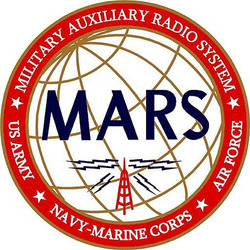 WD8DBY. "MARS members will send a DOD-approved message to the amateur radio organizations recognizing this cooperative interoperability effort."
WD8DBY. "MARS members will send a DOD-approved message to the amateur radio organizations recognizing this cooperative interoperability effort."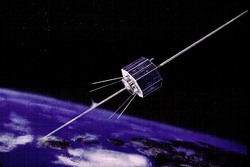 centimeters up/2 meters down) every 24 hours. He reminded users to use only the minimum necessary power and to avoid "ditting" to find their signals in the passband, which can bounce the entire passband up and down and sometimes even cause the transponder to reset to mode A.
centimeters up/2 meters down) every 24 hours. He reminded users to use only the minimum necessary power and to avoid "ditting" to find their signals in the passband, which can bounce the entire passband up and down and sometimes even cause the transponder to reset to mode A.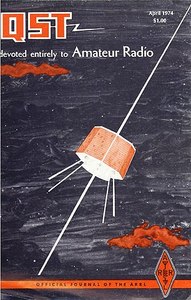 operational." Theory is that AO-7 initially went dark after several years of operation when a battery shorted, and it returned to operation when the short circuit opened. With no working batteries, AO-7 now only functions when it's receiving direct sunlight, and it shuts down when in eclipse.
operational." Theory is that AO-7 initially went dark after several years of operation when a battery shorted, and it returned to operation when the short circuit opened. With no working batteries, AO-7 now only functions when it's receiving direct sunlight, and it shuts down when in eclipse..jpg) to strictly enforce the rules in this case. As Garmin noted in its request, the certified Part 25 module in the MURS unit would allow emergency communication to the outside world at the push of a button."
to strictly enforce the rules in this case. As Garmin noted in its request, the certified Part 25 module in the MURS unit would allow emergency communication to the outside world at the push of a button.".jpg) The latest episode of the On the Air podcast (Episode 9) features a discussion on how to tune HF signals and use transceiver tools to enhance reception. The On the Air podcast is a monthly companion to On the Air magazine, ARRL's magazine for beginner-to-intermediate ham radio operators.
The latest episode of the On the Air podcast (Episode 9) features a discussion on how to tune HF signals and use transceiver tools to enhance reception. The On the Air podcast is a monthly companion to On the Air magazine, ARRL's magazine for beginner-to-intermediate ham radio operators..jpg) The latest episode of Eclectic Tech podcast (Episode 17) features a discussion of how RSID is used to identify HF digital modes, and a chat with Bob Allison, WB1GCM, about mysterious Long Delayed Echoes.
The latest episode of Eclectic Tech podcast (Episode 17) features a discussion of how RSID is used to identify HF digital modes, and a chat with Bob Allison, WB1GCM, about mysterious Long Delayed Echoes.

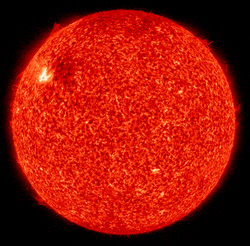 Predicted solar flux for the next 45 days is 73 on September 24 - October 1, and 70 on October 2 - November 2.
Predicted solar flux for the next 45 days is 73 on September 24 - October 1, and 70 on October 2 - November 2.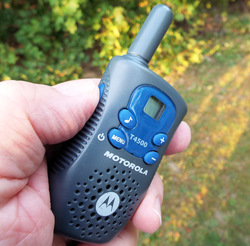
%20Chinese%20Foghorn%20on%2020.JPG)
(1).png) The role of IARUMSâ--âmonitoring the amateur bands to search and identify transmissions sent by intrudersâ--âis important, because the amount and variety of intruders is rapidly growing, IARU said. "A number of national monitoring coordinators and volunteers have been watching our bands for many years. But more needs to be done to raise awareness of societies and countries where no national monitoring team exists. Also, existing groups can still help by sharing detailed information worldwide with others. 'Monitoring is Teamwork!'"
The role of IARUMSâ--âmonitoring the amateur bands to search and identify transmissions sent by intrudersâ--âis important, because the amount and variety of intruders is rapidly growing, IARU said. "A number of national monitoring coordinators and volunteers have been watching our bands for many years. But more needs to be done to raise awareness of societies and countries where no national monitoring team exists. Also, existing groups can still help by sharing detailed information worldwide with others. 'Monitoring is Teamwork!'" The QSO Today Virtual Ham Expo has announced that all Expo
The QSO Today Virtual Ham Expo has announced that all Expo 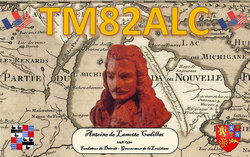 TM82ALC
TM82ALC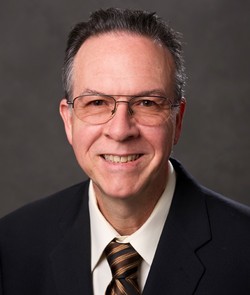 assist him with various tasks and board committee assignments. One task I'm especially eager to tackle is launching a New England Division website."
assist him with various tasks and board committee assignments. One task I'm especially eager to tackle is launching a New England Division website."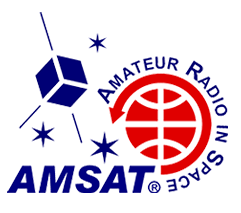 After counting the ballots, AMSAT has announced its Board of Directors. In order of votes received, Mark Hammond, N8MH (707); Paul Stoetzer, N8HM (703), and Bruce Paige, KK5DO (667), were elected as AMSAT Directors for terms ending in 2022. Stoetzer, a former Board member and current Executive Vice President, fills the seat being vacated by AMSAT veteran Tom Clark, W3IO. Howie DeFelice, AB2S (550), was elected as first alternate director, and Bob McGwier, N4HY (534), as second alternate director for terms ending in 2021. Jeff Johns, WE4B, received 429 votes. -- Thanks to AMSAT News Service
After counting the ballots, AMSAT has announced its Board of Directors. In order of votes received, Mark Hammond, N8MH (707); Paul Stoetzer, N8HM (703), and Bruce Paige, KK5DO (667), were elected as AMSAT Directors for terms ending in 2022. Stoetzer, a former Board member and current Executive Vice President, fills the seat being vacated by AMSAT veteran Tom Clark, W3IO. Howie DeFelice, AB2S (550), was elected as first alternate director, and Bob McGwier, N4HY (534), as second alternate director for terms ending in 2021. Jeff Johns, WE4B, received 429 votes. -- Thanks to AMSAT News Service Radio Amateurs of Canada has announced that
Radio Amateurs of Canada has announced that 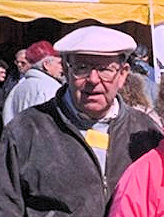 Former West Virginia Section Manager Karl Thompson, K8KT, died on July 28. He was 80. Thompson, of Charleston, served as West Virginia Section Communications Manager (SCM) from 1979 until 1983, and, after the position was renamed, as Section Manager (SM) from 1984 until 1994. Thompson subsequently served the Section as an Assistant Section Manager and Technical Coordinator. Current West Virginia SM, Dan Ringer, K8WV, said in a message to members, "Karl was one of the best-known amateurs in West Virginia. He represented all of the best of the amateur community." A ham from the age of 15, Thompson was employed by the telephone company (C&P, Bell Atlantic, and Verizon), retiring after 28 years of service. He was president of the West Virginia State Radio Council for several years and was honored with the ARRL Roanoke Division Amateur of the Year award in 1983. He received the ARRL Roanoke Division Service Award that same year. Thompson played guitar, autoharp, and piano and was a member of several singing groups over the years. He co-hosted the Old Time Country Music Hour on WZAC-FM for 4 years.
Former West Virginia Section Manager Karl Thompson, K8KT, died on July 28. He was 80. Thompson, of Charleston, served as West Virginia Section Communications Manager (SCM) from 1979 until 1983, and, after the position was renamed, as Section Manager (SM) from 1984 until 1994. Thompson subsequently served the Section as an Assistant Section Manager and Technical Coordinator. Current West Virginia SM, Dan Ringer, K8WV, said in a message to members, "Karl was one of the best-known amateurs in West Virginia. He represented all of the best of the amateur community." A ham from the age of 15, Thompson was employed by the telephone company (C&P, Bell Atlantic, and Verizon), retiring after 28 years of service. He was president of the West Virginia State Radio Council for several years and was honored with the ARRL Roanoke Division Amateur of the Year award in 1983. He received the ARRL Roanoke Division Service Award that same year. Thompson played guitar, autoharp, and piano and was a member of several singing groups over the years. He co-hosted the Old Time Country Music Hour on WZAC-FM for 4 years.







